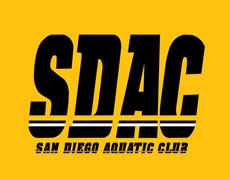The San Diego Aquatic Club endorses and promotes the USA Swimming Safe Sport program. It is a requirement for all USA Swimming Clubs to have policies on the Safe Sport programs.
USA Swimming Safe Sport Weblink
MAAPP - Minor Athlete Abuse Prevention Policy
To support the USA swimming Minor Athlete Abuse Protection Policy, SI is implementing new rules around the use of team and personal canopies and tents at all SI sanctioned and “novice” meets and team events effective immediately. The intent of this policy is to ensure visibility and safety of our athletes at all times. The requirements are as follows:
- The preference is that all canopies are open on all four sides at all times.
- If weather does not support this, then there are two options for enclosure:
- all four sides can be enclosed with a minimum of one side having a fully transparent enclosure that is public facing
- if non transparent sides are used, a minimum of one side must be open and public facing at all times
- If tents are used, then at all times, the opening into the tent must be secured in such a way that there is visibility into the tent at all times.
To learn more about the Safe Sport program, please follow the links below:
Bullying Prevention
Dealing With A Safe Sport Concern
SDAC MAAPP POLICY
To learn more about MAAPP, please follow the links below:
Minor Athlete Abuse Prevention Policy
APT for Adult Athletes (Swimmers 18 and Older)
Please use the links below to access the Safe Sport and MAAPP courses:
Free Safe Sport Training for Minor Athletes
Safe Sport Training for Athletes 18 +
Safe Sport Training for Parents
Best Practice Guidelines
The following Best Practice Guidelines are strongly recommended for all USA Swimming members.
1. Parents should be encouraged to appropriately support their children’s swimming experience.
2. All swimming practices should be open to observation by parents.
3. Coaches should not invite or have an athlete(s) to their home without the permission of the athlete’s parents (or legal guardian).
4. When only one athlete and one coach travel to a competition, at the competition the coach and athlete should attempt to establish a “buddy” club to associate with during the competition and when away from the venue.
5. Relationships of a peer-to-peer nature with any athletes should be avoided. For example, coaches should avoid sharing their own personal problems with athletes.
6. Coaches and other non-athlete adult members should avoid horseplay and roughhousing with athletes.
7. When a coach touches an athlete as part of instruction, the coach should do so in direct view of others and inform the athlete of what he/she is doing prior to the initial contact. Touching athletes should be minimized outside the boundaries of what is considered normal instruction. Appropriate interaction would include high fives, fist bumps, side-to-side hugs and handshakes.
8. Coaches should not initiate contact with or accept supervisory responsibility for athletes outside club programs and activities.
9. Coaches should avoid having athletes that are their favorites. They should also avoid creating a situation that could be perceived as them having favorites.
10. Gift-giving, providing special favors or showing favoritism to individual athletes is strongly discouraged.
SDAC Safe Sport Coordinator: Tim Oelgoetz - [email protected] - 858-254-2233
Contact Safe Sport with a Concern
To make a report to USA Swimming Safe Sport team call (719) 866-4578 or visit https://www.usaswimming.org/safe-sport/deal-with-a-safe-sport-concern
To make a report to the U.S Center for SafeSport use the online reporting form, call (720) 524-5640, or find more information at www.uscenterforsafesport.org




